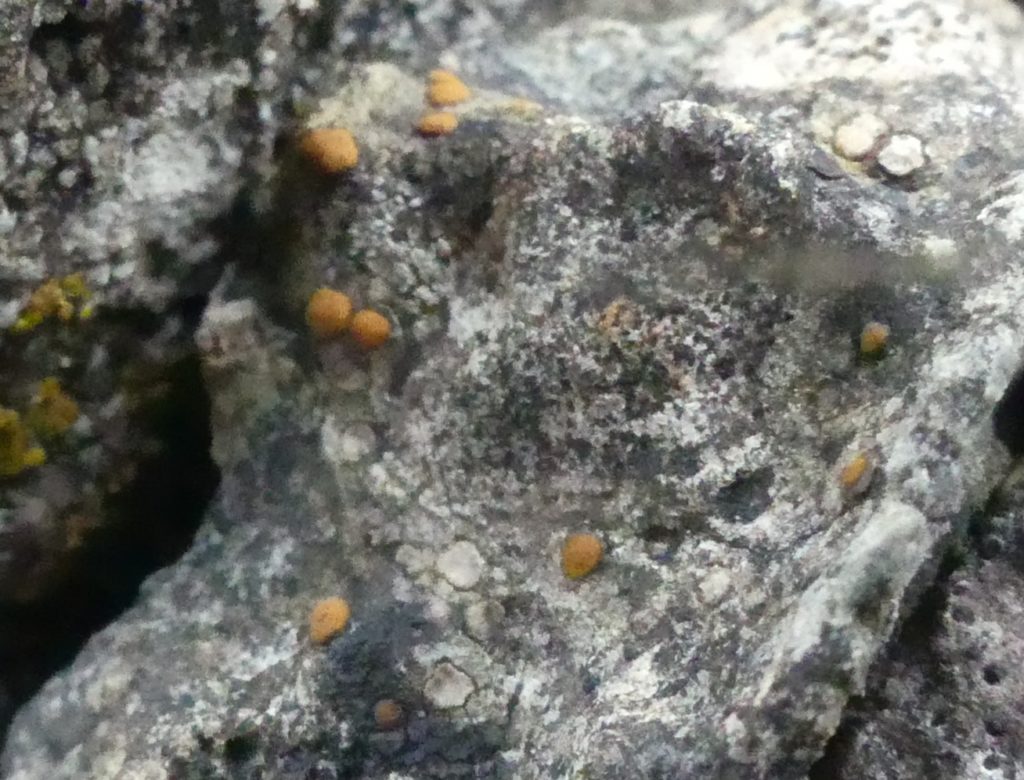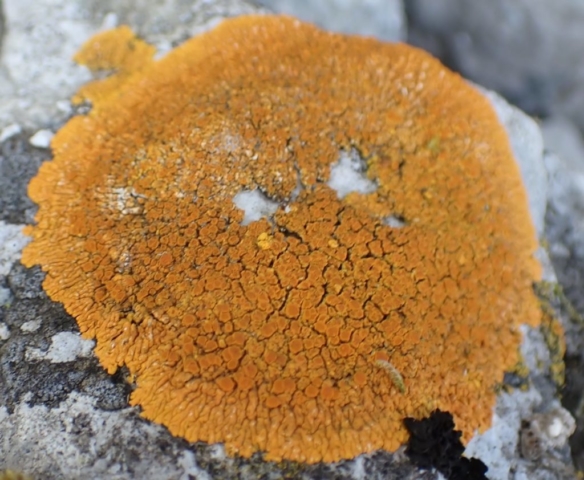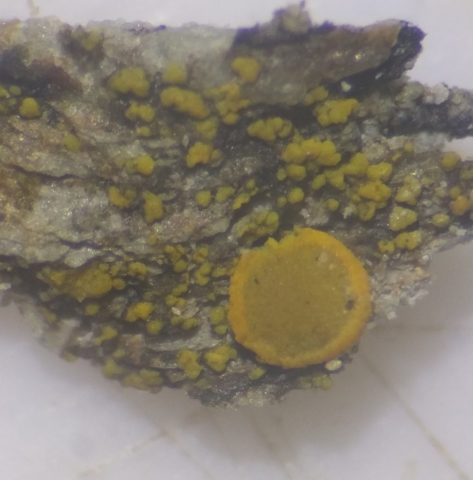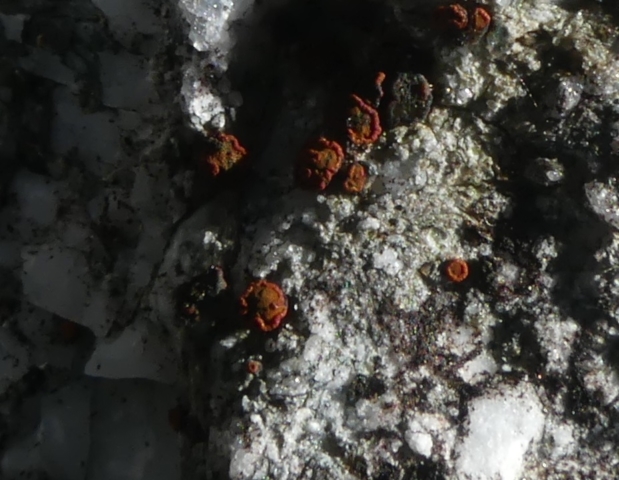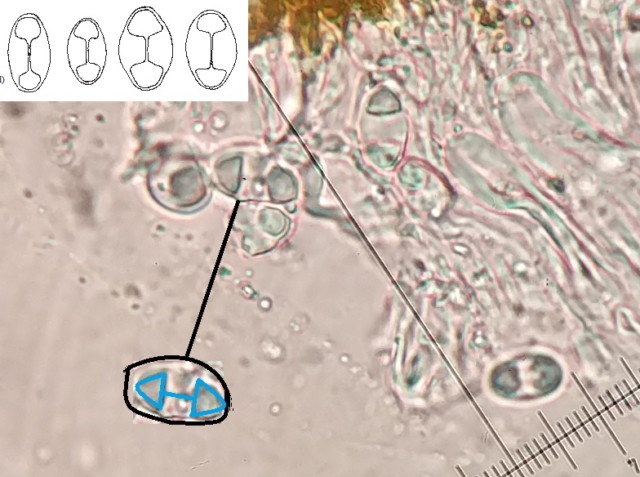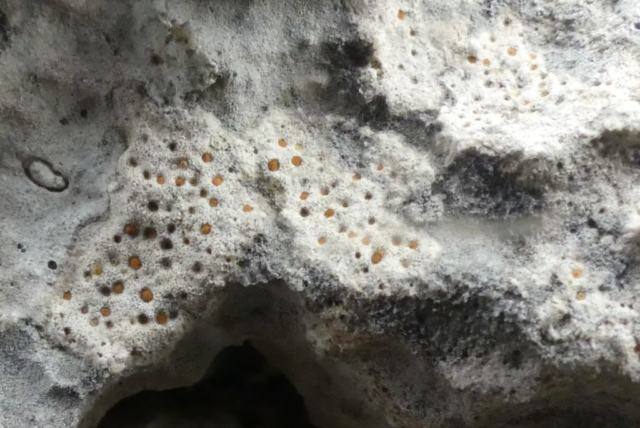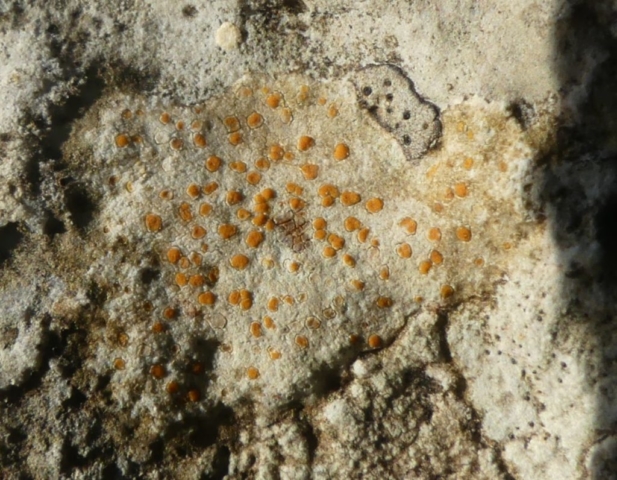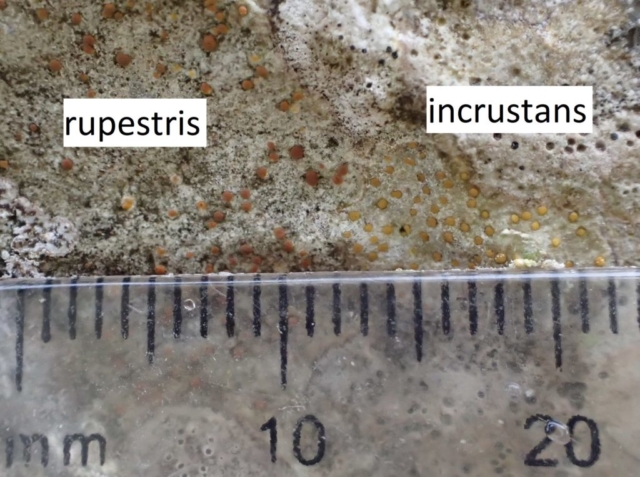Lichens in the Protoblastenia genus are all saxicolous crusts with orange apothecia; they are found on limestone with P. rupestris also widespread on mortar or concrete. There are three common species:
- Protoblastenia incrustans: small immersed fruit to 0.5mm wide; empty pits found. More info on this species
- Protoblastenia rupestris: green/grey areolate thallus, with fruit to 1 mm, not immersed. More info on this species
- Protoblastenia calva: strongly convex fruit to 1.5mm, in shallow pits when young. More info on this species
The immersed small fruit of P. incrustans are distinctive. The size of the fruit for the two others overlap, so looking for an areolate thallus (P. rupestris) or shallow pits (P. calva) is the best guide. The spores of the three species are similar so this feature cannot easily be used to distinguish between them.
There are three other Protoblastenia species but these are rare:
- P. lilacina, K-, NR
- P. cyclospora, globose spores, NR
- P. siebenhaariana, NS
Habitat and distribution
P. rupestris is found on limestone, mortar and concrete (which contain limestone) ie almost everywhere in GB&I.
P. incrustans and P. calva are found on hard limestone. The distribution maps correspond to the geological outcropping of this rock.
Our local patch is Knipe Scar which is a limestone pavement and outcrop on the eastern fringe of the Lake District in Cumbria. Protoblastenia species occur on the vertical edge and on the clints of the limestone pavement.
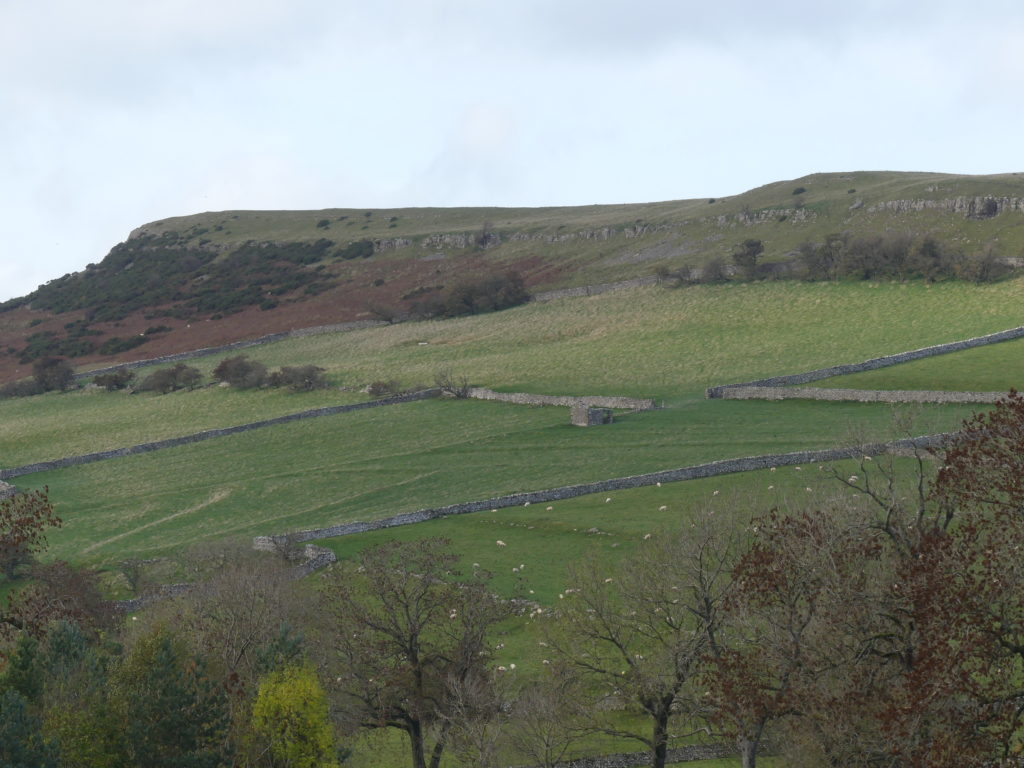

Protoblastenia or Caloplaca?
Caloplaca is the main other saxicolous genus that has orange fruit.
- Caloplaca fruit always have a margin; Protoblastenia does not have a margin.
- Caloplaca fruit are always flat; Protoblastenia incrustans is flat; the other two are convex.
- Caloplaca may have a yellow or orange thallus. Protoblastenia never has a yellow or orange thallus.
- Caloplaca fruit has polarilocular spores; Protoblastenia spores are simple.
- Both Caloplaca and Protoblastenia are K+ crimson.
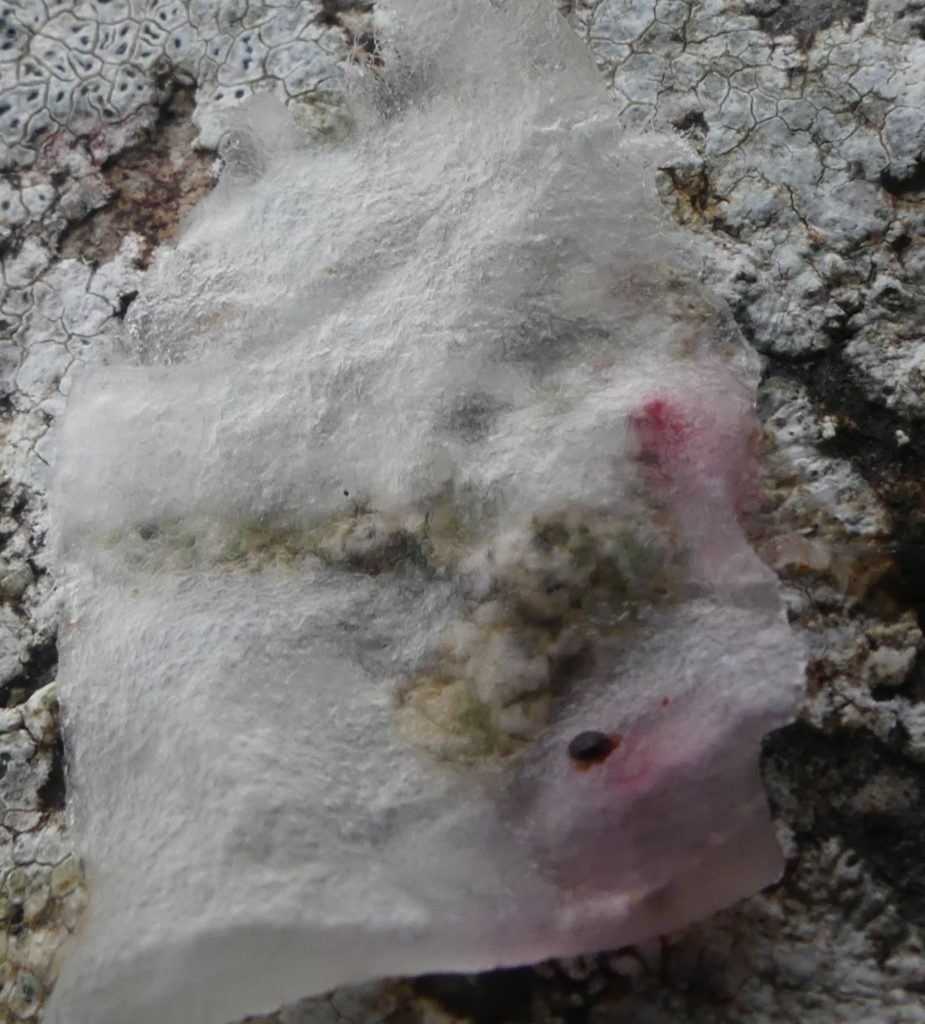
Caloplaca gallery
Anything else it could be?
These genera do have orange fruit but also always have a distinctive margin:
- Candelariella
- Gyalecta
- Petractis
Protoblastenia incrustans
- Small apothecia, up to 0.5mm, with no margin, immersed in pits; some pits may be empty
- Flat pale orange apothecia, fully immersed with the top level with the limestone surface
- Thallus pale or grey or endolithic, ie within the limestone
- K+ crimson
- On hard limestone
Distinctive once you’ve got your eye in.
Protoblastenia rupestris
- Medium-sized apothecia, up to 1mm, with no margin, not immersed in pits
- Flattened convex orange apothecia
- Variable thallus: often green-brown and areolate
- K+ crimson
- On hard limestone, mortar or concrete
Can look similar to P. calva: don’t use apothecia size to differentiate.
If thallus is areolate then it’s P. rupestris. If smooth then it’s P. calva.
If substrate is mortar or concrete then almost certainly P. rupestris.
P. rupestris fruit can be a duller orange than P. calva.
If some shallow pits visible, then it’s P. calva.
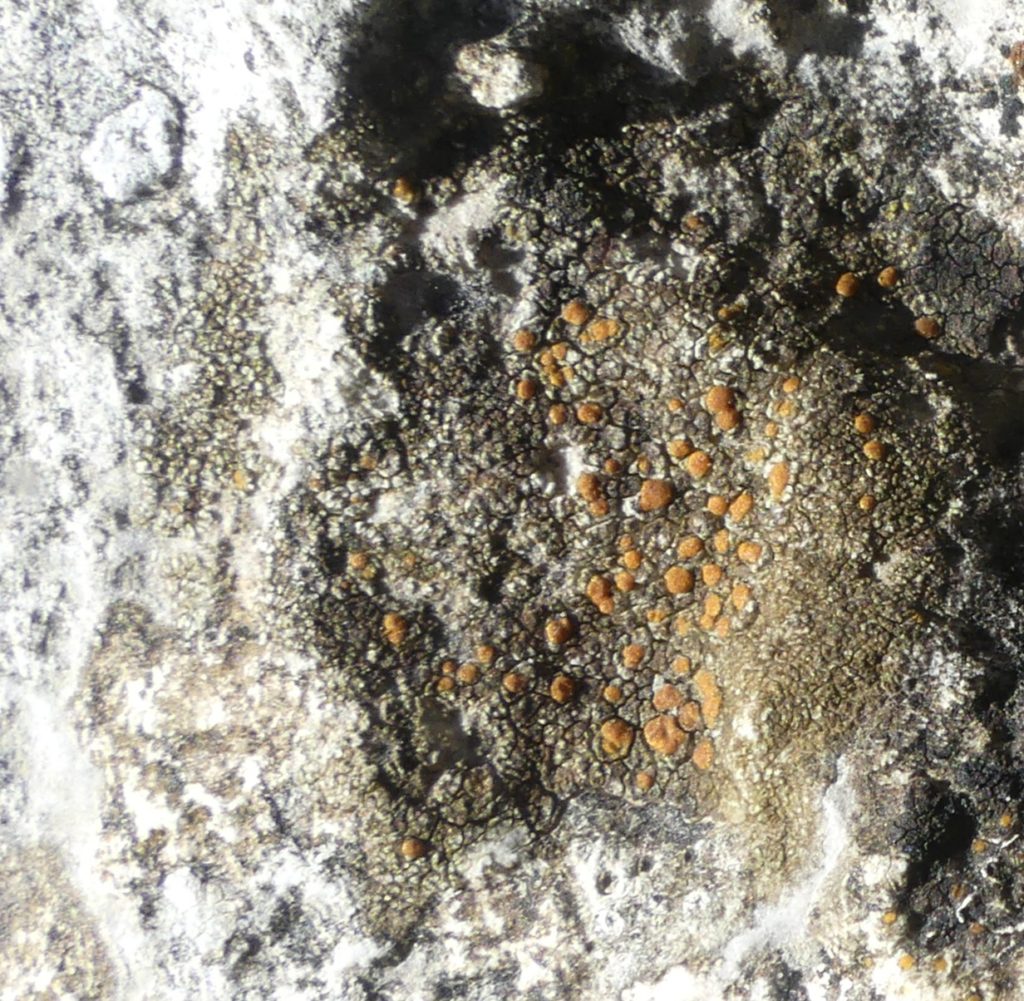
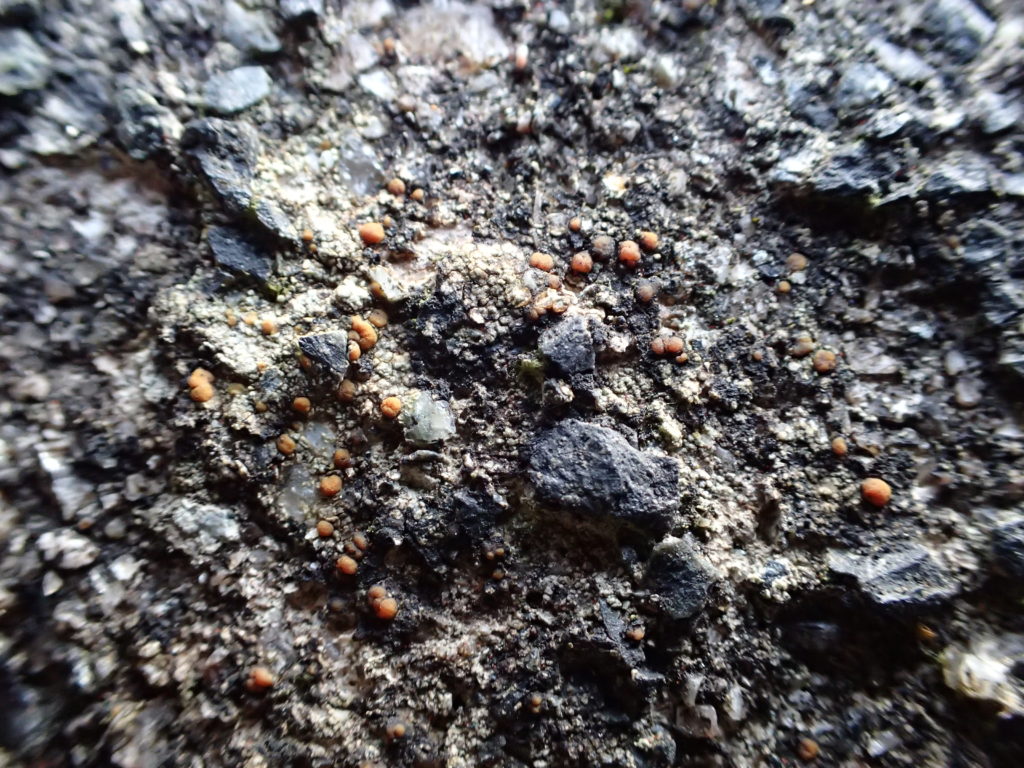
Protoblastenia calva
- Larger apothecia, up to 1.5mm, with no margin, often immersed in shallow pits
- More convex brighter orange apothecia
- Thallus: white or cream or grey, smooth or endolithic
- K+ crimson
- On hard limestone
Can look similar to P. rupestris: don’t use apothecia size to differentiate.
If thallus is areolate then it’s P. rupestris. If smooth then it’s P. calva.
If substrate is mortar or concrete then almost certainly P. rupestris.
If some shallow pits visible, then it’s P. calva.
